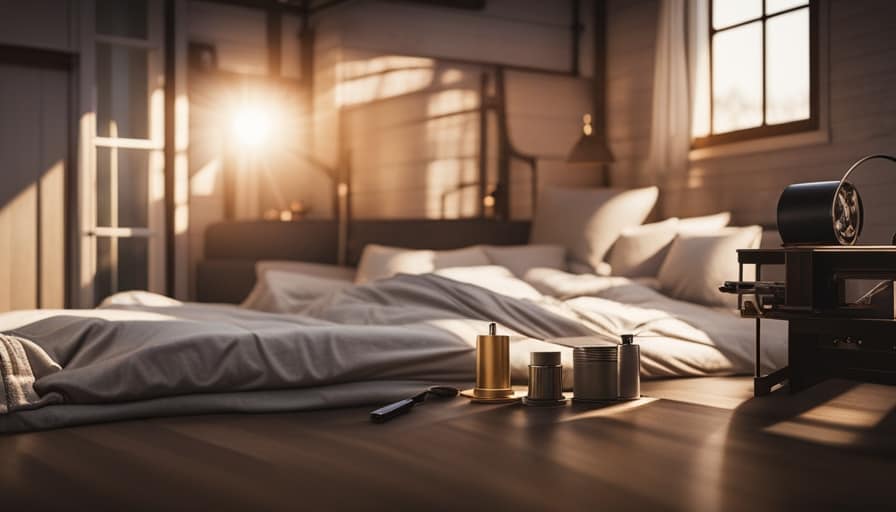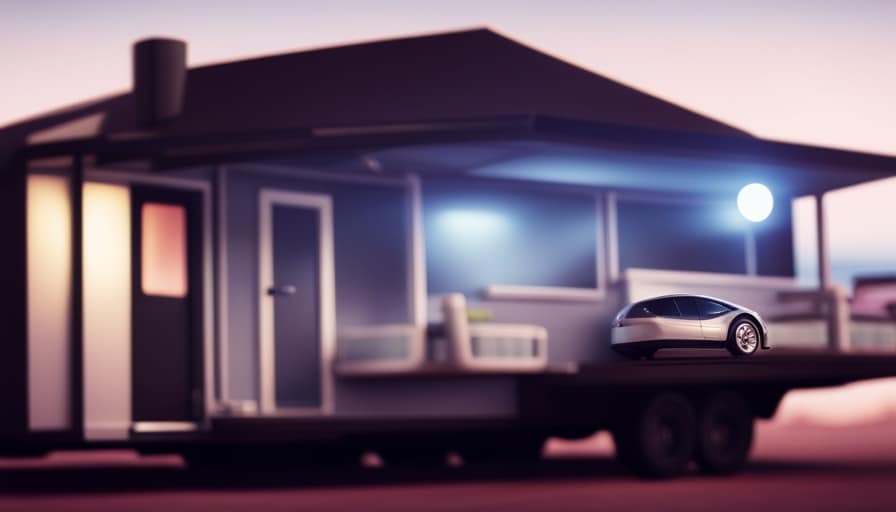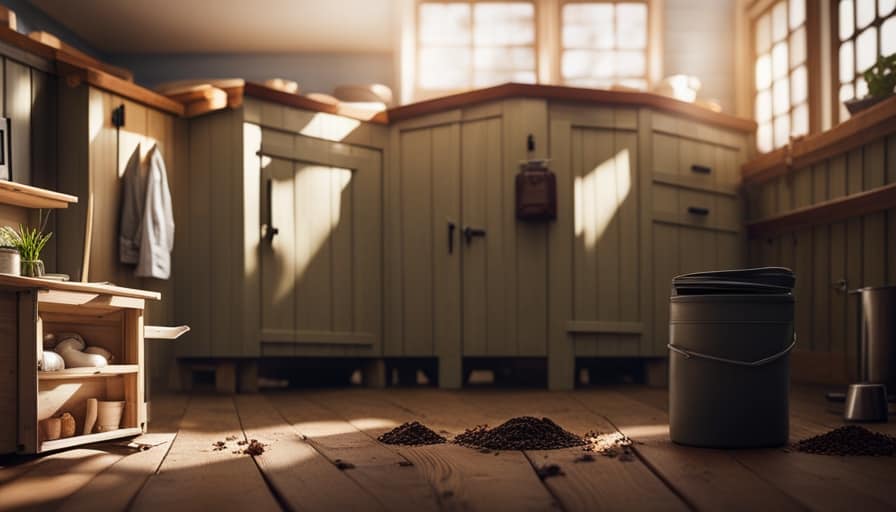Are you fed up with feeling confined in your tiny home? Don’t worry, because we have the perfect solution for you!
In this article, we, your trusty storage gurus, will guide you through the art of maximizing your space.
From assessing your storage needs to installing efficient overhead storage units, we’ve got all the tips and tricks you need to master micro house storage installation.
Get ready to add extra space and transform your tiny home into a storage haven!
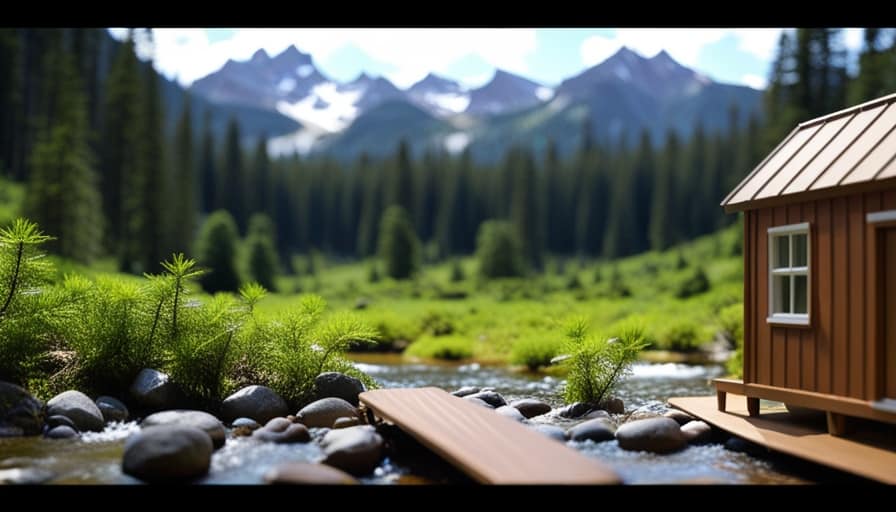
Key Takeaways
- Evaluate storage requirements for the micro house and consider size and quantity of items to determine storage solutions.
- Utilize vertical space with wall-mounted storage units, shelves, hooks, and hanging organizers to maximize storage potential.
- Invest in multi-functional furniture pieces with hidden storage compartments to optimize space.
- Incorporate built-in storage options, such as hidden compartments in furniture and innovative wall-mounted shelves, to enhance both storage and aesthetics.
Assessing Your Storage Needs
We’ll start by evaluating our storage requirements for the micro house.
When it comes to living in a small space, custom storage solutions and space-saving furniture options are essential.
Every inch of the micro house needs to be utilized efficiently to maximize storage capacity.
Begin by assessing the items that need to be stored and categorize them accordingly. Consider the size and quantity of each item to determine the appropriate storage solutions.

Customized shelves, cabinets, and built-in closets can be designed to fit your specific needs.
Utilize vertical space by installing wall-mounted storage units or hanging organizers.
Additionally, opt for furniture that serves multiple purposes, such as a sofa bed or a coffee table with hidden storage compartments.
Crafting a Strategic Storage Plan
When it comes to crafting a strategic storage plan for our micro house, there are three key points to consider.
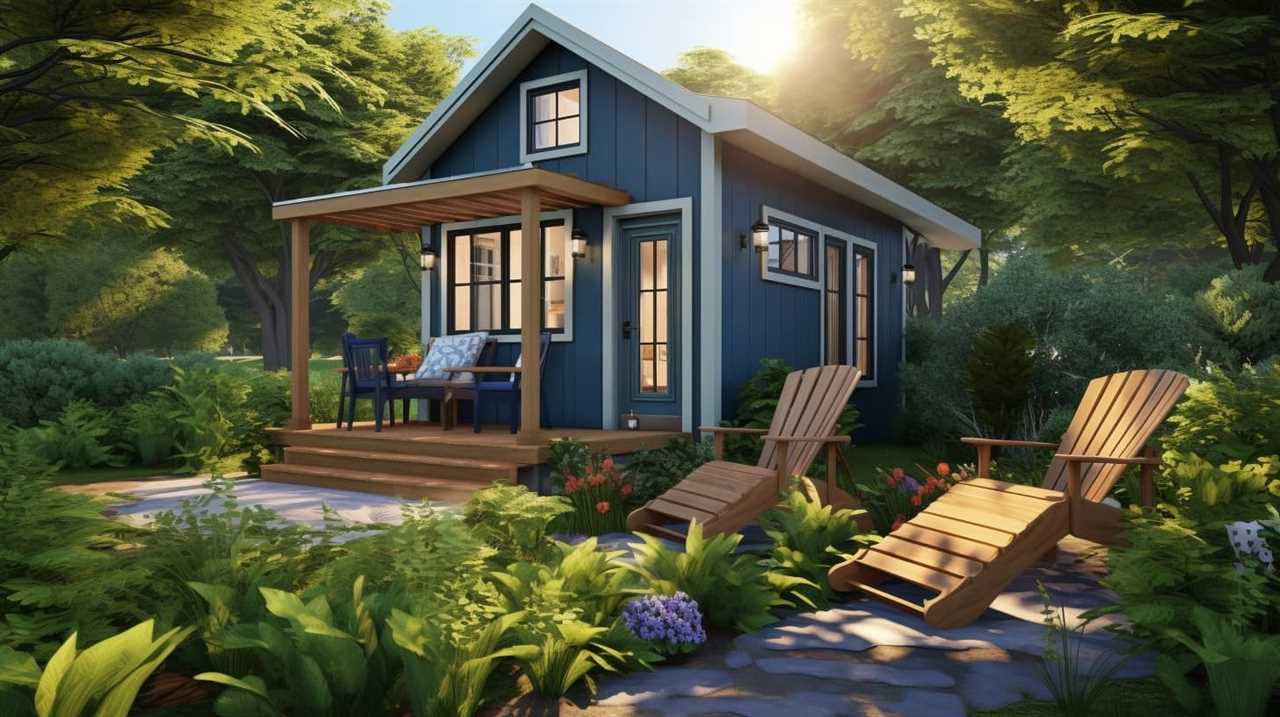
Firstly, we need to focus on maximizing the small space we’ve available to us. This means utilizing every nook and cranny, from under the bed to the walls.
Secondly, we should think outside the box and come up with creative storage solutions that make the most of our limited square footage. This could involve using multi-functional furniture or installing shelves and hooks in clever ways.
Lastly, it’s crucial to organize our essentials effectively, ensuring that everything has its designated place and is easily accessible when needed.
Maximizing Small Space
Let’s start by brainstorming creative ways to optimize the limited space available and develop a well-thought-out storage strategy. When it comes to maximizing small spaces, clever organization and space-saving hacks are key.

One effective strategy is to utilize vertical space by installing shelves, hooks, and hanging organizers on walls and doors. This not only frees up valuable floor space but also keeps items within easy reach.
Another tip is to invest in multi-functional furniture pieces, such as ottomans with hidden storage compartments or beds with built-in drawers. These furniture pieces serve a dual purpose of providing comfort or functionality while also offering storage solutions.
Additionally, utilizing under-utilized spaces like the area under the stairs or above cabinets can provide extra storage opportunities. These areas can be transformed into shelves, drawers, or cabinets to maximize storage potential.
By implementing these space-saving strategies, you can make the most of your small space and create a clutter-free environment.

Now, let’s dive into the next section where we explore creative storage solutions.
Creative Storage Solutions
To maximize storage in a micro house, we can craft a strategic storage plan by utilizing every available nook and cranny. In order to make the most of the limited space, here are some creative storage solutions and space-saving hacks to consider:
-
Hidden Storage: Install hidden compartments in furniture, such as ottomans or beds with built-in drawers, to keep belongings out of sight and free up floor space.
-
Vertical Shelving: Utilize vertical wall space by installing tall shelves or hanging organizers to store items like books, plants, or kitchen utensils.
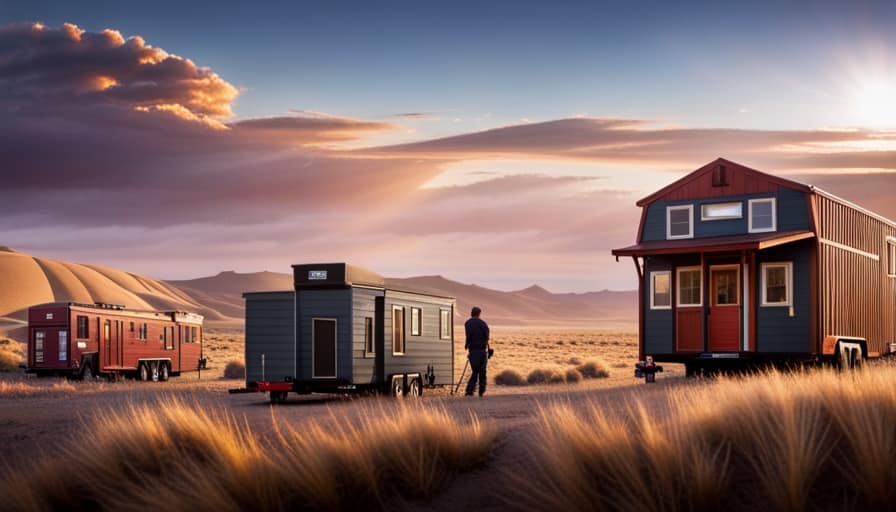
-
Multi-purpose Furniture: Opt for furniture pieces that serve multiple functions, like a coffee table with built-in storage or a sofa that can be converted into a bed.
-
Utilize Doors: Maximize storage potential by adding hanging racks or hooks on the inside of cabinet doors or closet doors to hang coats, bags, or jewelry.
Organizing Essentials Effectively
We can effectively organize our essentials by creating a strategic storage plan that maximizes the available space in our micro house. One key aspect to consider is utilizing vertical space, as it allows us to make the most of the limited square footage. By installing shelves or hanging organizers on walls, we can store items such as books, kitchen utensils, and toiletries, keeping our surfaces clear and clutter-free.
In addition to utilizing vertical space, implementing decluttering techniques is essential in organizing our essentials effectively. This involves sorting through our belongings and deciding what to keep, donate, or discard. By reducing the number of items we own, we can create a more streamlined and organized living environment.

To better understand how to create a strategic storage plan, refer to the table below:
| Storage Area | Items to Store | Storage Solution |
|---|---|---|
| Living Room | Books, DVDs, | Wall-mounted |
| Electronics | shelves | |
| Kitchen | Cookware, | Over-the-door |
| Utensils, | organizers | |
| Small appliances | ||
| Bathroom | Toiletries, | Floating shelves |
| Towels | ||
| Bedroom | Clothing, | Under-bed |
| Shoes, | storage | |
| Accessories | ||
| Entryway | Keys, | Wall-mounted |
| Mail, | hooks | |
| Shoes |
Incorporating Built-In Storage Options
When it comes to maximizing small living spaces, incorporating built-in storage options is key. These space-saving solutions not only provide clever storage solutions but also add to the overall aesthetic of the micro house.
From hidden compartments in furniture to innovative wall-mounted shelves, the possibilities are endless when it comes to creative built-in designs.
Space-Saving Storage Solutions
With our limited space, we can maximize storage options by incorporating built-in solutions. When it comes to space-saving hacks and innovative storage solutions, here are some ideas that can help us make the most of our micro house:
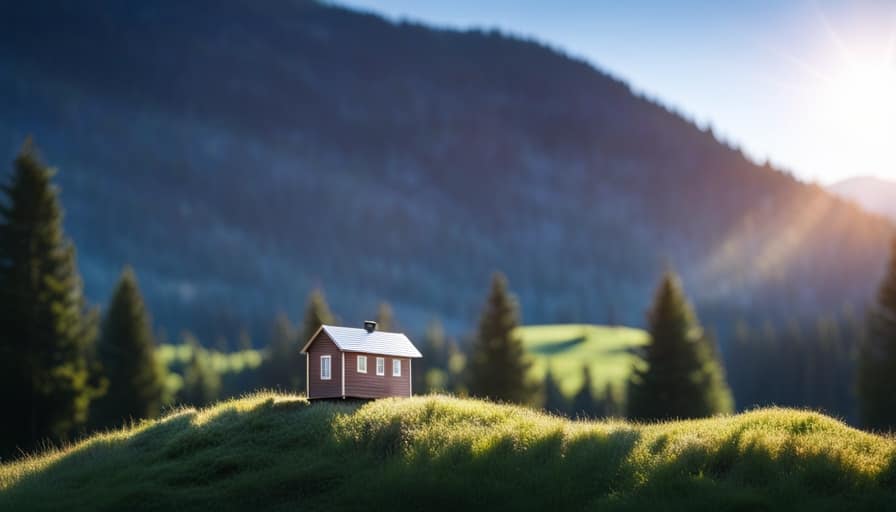
-
Utilize vertical space: Install shelves or cabinets that go all the way up to the ceiling. This will allow us to store items that aren’t frequently used, keeping them out of the way but still easily accessible when needed.
-
Opt for multi-functional furniture: Choose furniture pieces that serve multiple purposes, such as a bed with built-in drawers or a coffee table that doubles as a storage ottoman. This way, we can maximize our storage options without sacrificing valuable floor space.
-
Incorporate hidden storage: Utilize hidden storage options like under-bed storage or hidden compartments in furniture pieces. These clever solutions help to keep our belongings organized and out of sight, creating a clean and clutter-free living space.
-
Customize storage solutions: Consider customizing built-in storage solutions to fit our specific needs. Whether it’s a custom closet organizer or a built-in pantry, tailor-made storage options can make the most of every inch of our micro house.
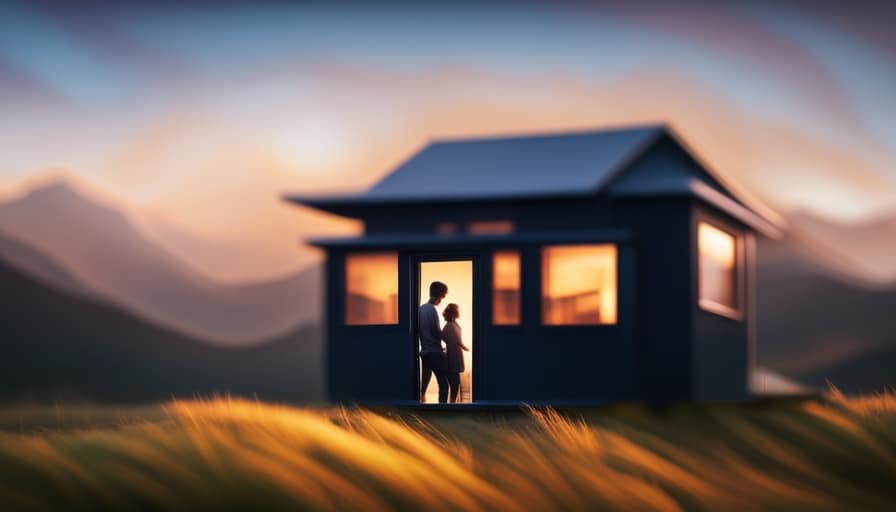
Maximizing Small Living Spaces
Let’s explore how we can maximize small living spaces by incorporating built-in storage options. When it comes to small space organization, every inch counts. Utilizing space saving techniques is essential to create a functional and clutter-free environment.
One way to maximize small living spaces is by incorporating built-in storage options. These can include built-in shelves, cabinets, and drawers. By utilizing vertical space, you can make the most of the available square footage. Install shelves on walls to store books, decorative items, and everyday essentials. Built-in cabinets and drawers can be used to store clothes, kitchen utensils, and other belongings.
Another space saving technique is to utilize multi-purpose furniture. Opt for a bed with built-in storage underneath or a coffee table with hidden compartments. These pieces of furniture not only provide storage but also serve dual functions, saving valuable space.
Incorporating built-in storage options and employing space saving techniques are key to maximizing small living spaces. By utilizing every nook and cranny, you can create a well-organized and efficient living area.
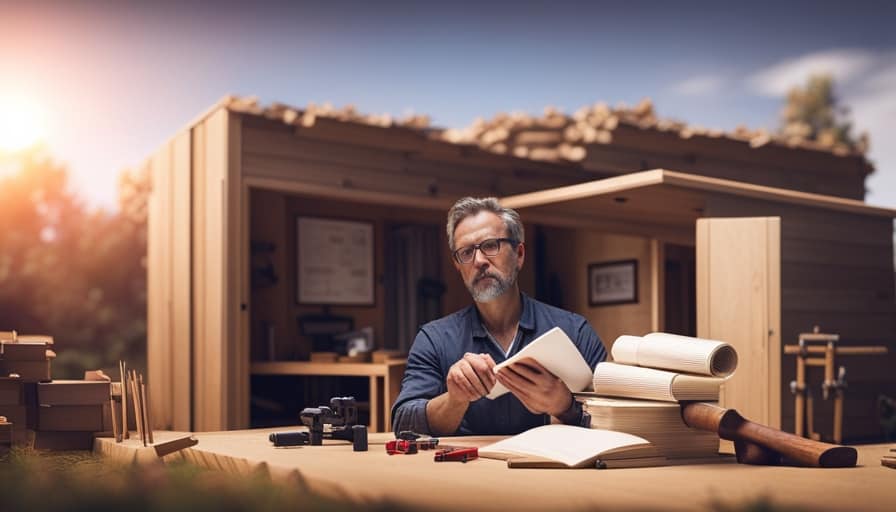
Creative Built-In Designs
We can enhance our micro house’s storage capabilities with creative built-in designs and incorporate various built-in storage options. Here are some ideas to make the most of our space:
-
Hidden storage: Utilize the space under stairs, beds, or seating areas to create hidden storage compartments. This allows us to keep our belongings organized and out of sight, maximizing the available space.
-
Custom cabinets: Install custom cabinets that are designed specifically for our micro house. These cabinets can be tailored to fit into any nook or cranny, providing ample storage for our belongings while seamlessly blending into the overall design of the space.
-
Built-in shelving: Incorporate built-in shelving units into our walls to create additional storage space. These shelves can be used to display decorative items or store everyday essentials, helping us keep our micro house clutter-free.
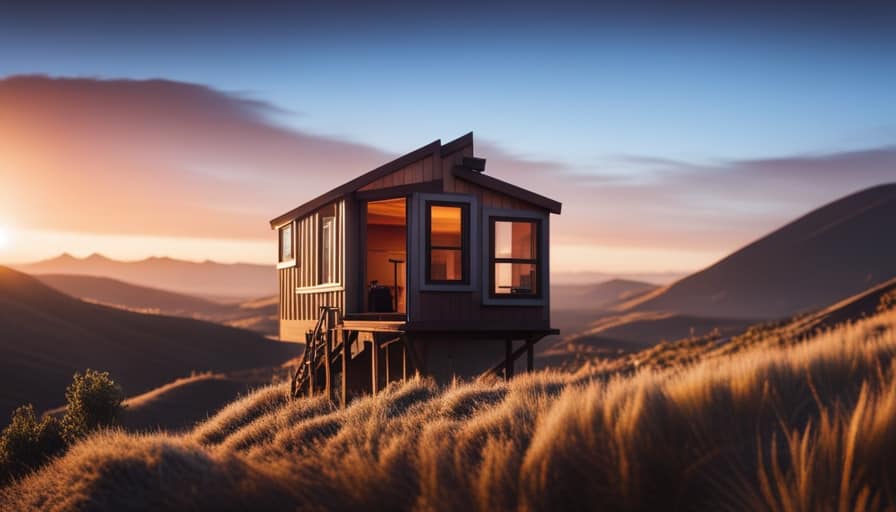
-
Vertical storage: Make use of vertical space by installing floor-to-ceiling storage units. This allows us to maximize storage capacity without sacrificing valuable floor space.
By incorporating these creative built-in designs, we can create a micro house that’s both functional and aesthetically pleasing.
Now, let’s explore the next section on choosing multi-purpose furniture with storage capacity.
Choosing Multi-Purpose Furniture With Storage Capacity
As homeowners, we can maximize space in our micro houses by opting for multi-purpose furniture that offers storage capacity. One great option is multi-functional furniture, which not only serves its primary purpose but also provides hidden storage solutions.

For example, a sofa with built-in storage underneath the seat cushions can be a perfect addition to a small living room. It allows you to store extra blankets, pillows, or even books without taking up any additional space.
Another option is a bed with drawers underneath, providing ample storage for clothes, bedding, or other belongings. These multi-purpose furniture pieces not only save space but also keep your micro house organized and clutter-free.
Now, let’s move on to the next section about installing sturdy wall shelves.
Installing Sturdy Wall Shelves
Wall shelves are a practical addition to maximize storage in our micro houses. Not only do they provide a functional solution, but they also add style to our living spaces. When it comes to installing wall shelves, it’s important to choose sturdy floating shelves that can hold the weight of our belongings. Adjustable wall shelving is also a great option as it allows us to customize the height and spacing between shelves to accommodate items of different sizes.
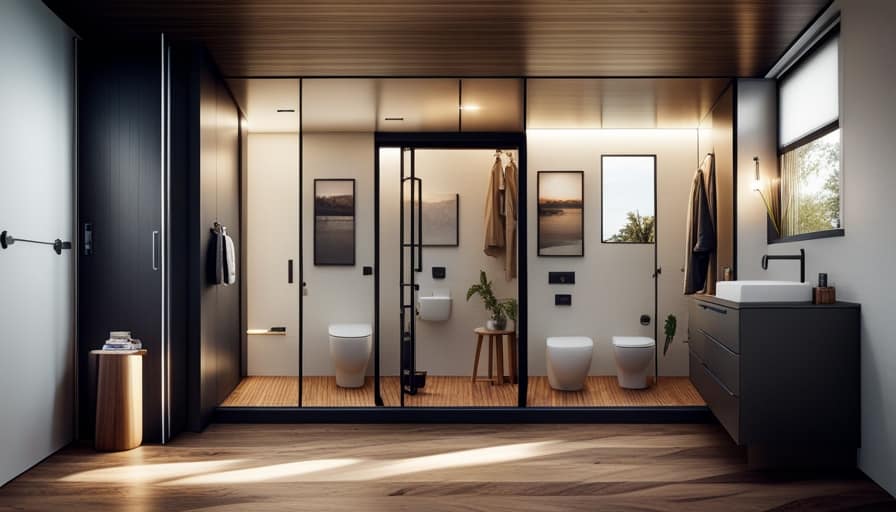
Here are some tips for installing wall shelves:
- Measure the wall space accurately to ensure a perfect fit.
- Use the right tools and hardware for installation, such as wall anchors for added support.
- Consider the weight capacity of the shelves and distribute the load evenly.
- Arrange the shelves in a visually appealing way, keeping in mind both function and aesthetics.
By implementing these tips, we can create a storage solution that isn’t only practical but also adds personality to our micro houses.
Now, let’s move on to optimizing the under bed storage potential.
Optimizing Under Bed Storage Potential
Our bed’s storage potential can be optimized by utilizing under bed space effectively. When it comes to micro house storage, every inch counts. Under bed storage is a great way to make the most of your limited space.

There are various customizable storage options that can be used to maximize the storage potential under your bed. One option is to use storage bins or drawers that can easily slide in and out, providing easy access to your belongings. Another option is to use bed risers to elevate your bed, creating additional space underneath. This hidden storage technique allows you to store items such as extra bedding, seasonal clothing, or even shoes.
By making smart use of the under bed space, you can free up valuable closet or floor space, keeping your micro house organized and clutter-free.
Now, let’s explore another clever storage solution: making smart use of stair space.
Making Smart Use of Stair Space
When it comes to maximizing storage in a micro house, one area that often gets overlooked is the space under the stairs. Utilizing under-stair storage can be a game changer, providing a perfect spot for stashing away items that would otherwise clutter your living space.
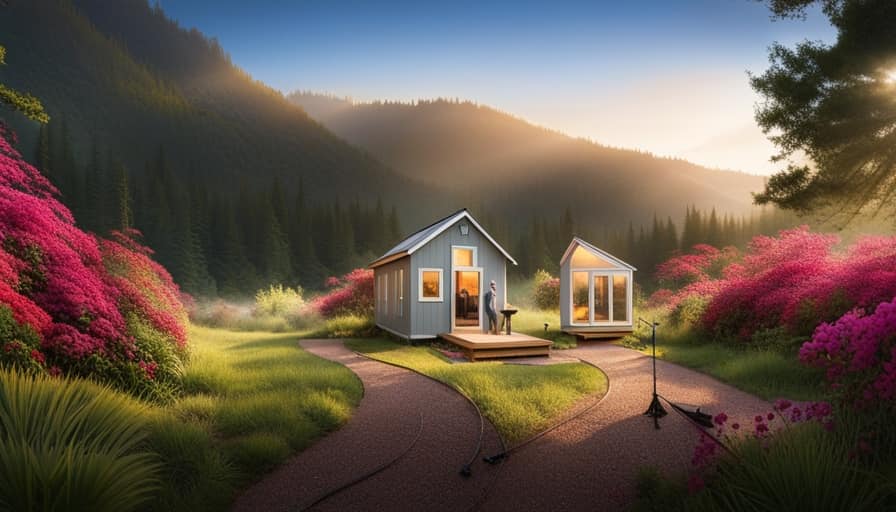
Additionally, there are many creative stair storage solutions available, such as built-in drawers or shelves, that can make smart use of the often wasted space on the sides or underneath your staircase.
Utilizing Under-Stair Storage
We can maximize the use of the under-stair storage to create additional space in our micro house. Utilizing this often overlooked area allows us to organize our belongings efficiently and make the most of every inch. Here are some ideas on how to optimize under-stair storage:
-
Install custom drawers or cabinets: By fitting drawers or cabinets under the stairs, we can create designated spaces to store items like shoes, books, or even cleaning supplies.
-
Build open shelves: Open shelves are perfect for displaying decorative items or storing frequently used items such as bags or hats. They add a touch of personality to the space while remaining functional.
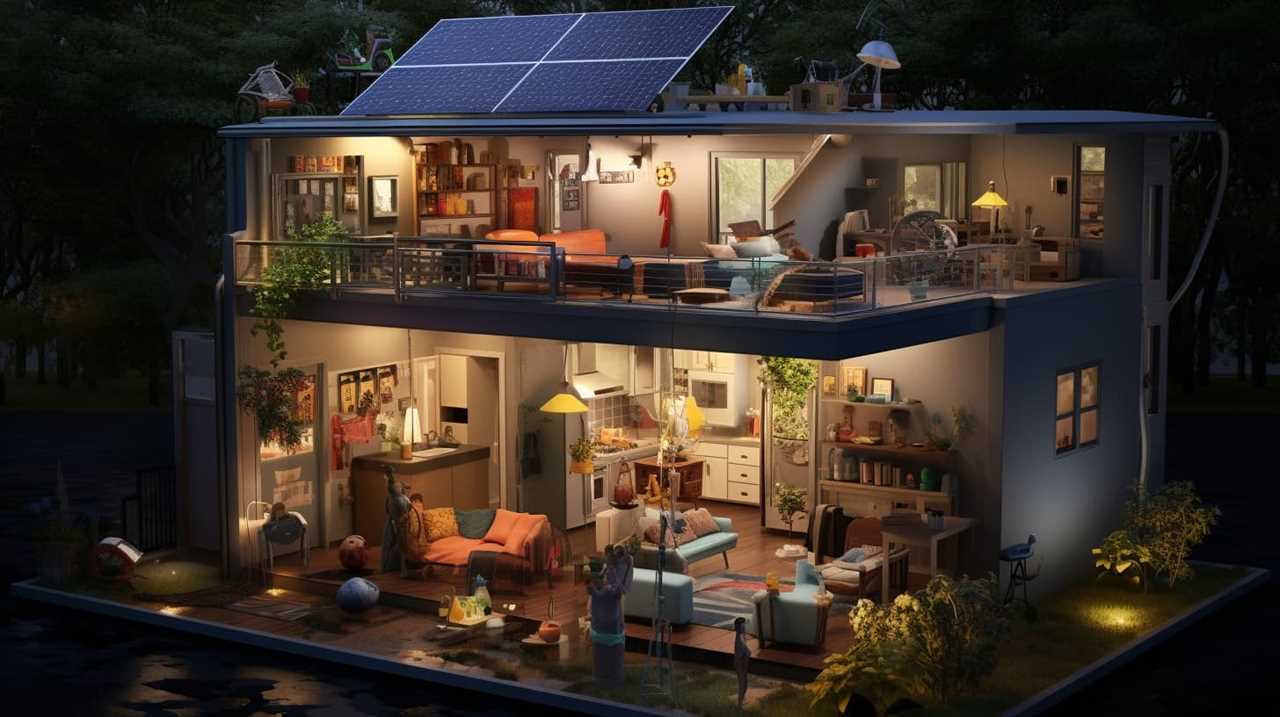
-
Create a mini pantry: Convert the under-stair area into a small pantry by installing racks or shelves. This is a great option for storing non-perishable food items and kitchen supplies.
-
Design a cozy reading nook: Transform the space under the stairs into a cozy reading nook by adding a comfortable chair or a built-in bench. This provides a cozy retreat for relaxation and leisure.
Maximizing vertical space is essential in a micro house, and utilizing under-stair storage can significantly contribute to achieving an organized and clutter-free living environment.
Creative Stair Storage Solutions
Let’s explore some innovative ways to maximize the storage potential of stair space in our micro house. When it comes to creative stair storage solutions, hidden compartments and vertical storage are key.
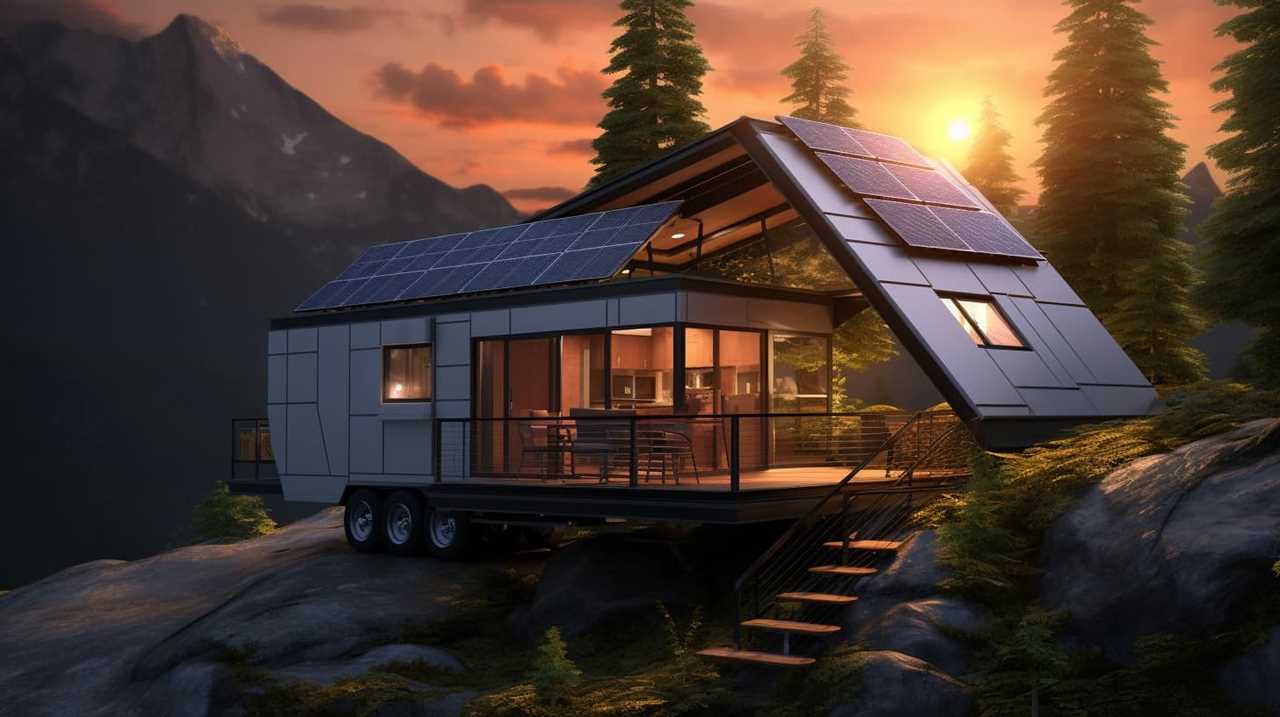
One idea is to incorporate hidden compartments within the stairs themselves. These can be built-in drawers or cabinets that slide out, providing ample space to store items such as shoes, books, or even small kitchen appliances.
Another option is to utilize the vertical space surrounding the stairs. Installing shelves or cubbies on the walls adjacent to the stairs can create additional storage for items like baskets, folded clothes, or decorative objects.
Implementing Hooks and Diverse Hanging Systems
We can maximize our storage capacity by utilizing hooks and various hanging systems. These versatile solutions allow us to diversify our storage options and make the most of vertical space.
Here are some ideas to get you started:
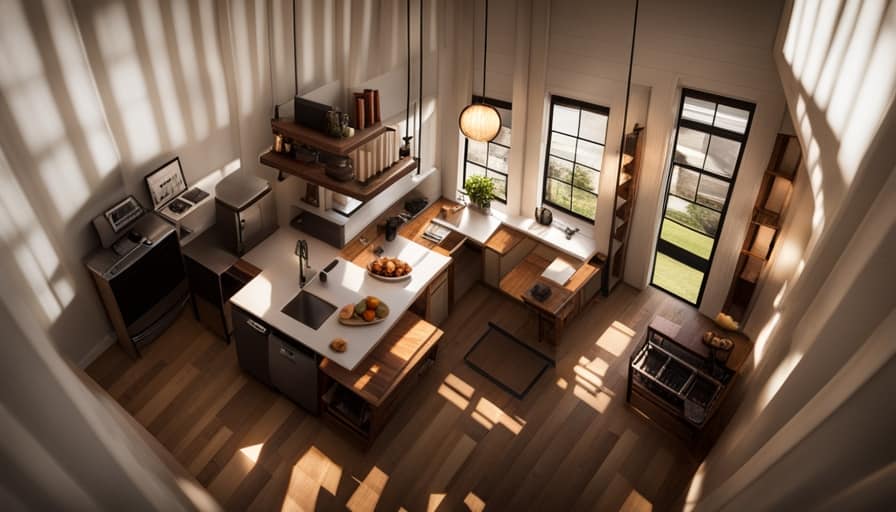
-
Install a pegboard on a wall to hang tools, utensils, and small items. This not only keeps them organized but also frees up valuable drawer and countertop space.
-
Use adhesive hooks on the inside of cabinet doors to hang measuring cups, pot lids, or oven mitts. This makes them easily accessible and eliminates the need for extra shelf space.
-
Hang a shoe organizer on the back of a door to store cleaning supplies, toiletries, or even pantry items. This creates additional storage space without taking up valuable floor or counter space.
-
Consider using a ceiling-mounted hanging system in the kitchen or garage to hang pots, pans, bicycles, or even a kayak. This not only saves space but also adds a unique visual element to the room.
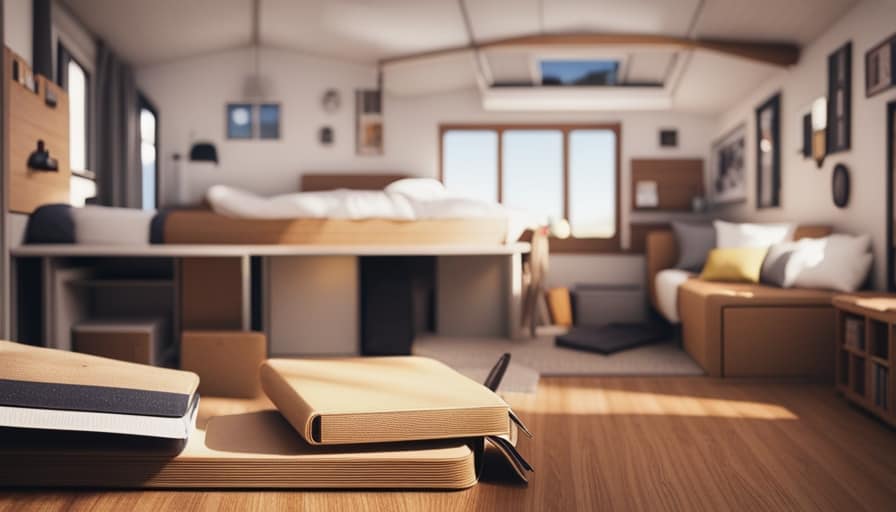
Installing Efficient Overhead Storage Units
To optimize our storage space, let’s consider installing a few efficient overhead storage units. Overhead storage ideas can be a game-changer when it comes to organizing small items in a micro house.
Imagine utilizing the unused space above your head to store bins, boxes, or even hanging baskets. These storage units can be mounted on the ceiling or attached to the walls, providing easy access to frequently used items while keeping them out of the way.
With a variety of options available, such as adjustable racks or pulley systems, you can customize the overhead storage to fit your specific needs. By incorporating these space-saving solutions, you’ll free up valuable floor space and create a more organized and efficient living environment.
Now that we’ve explored installing overhead storage units, let’s move on to finalizing and fine-tuning our storage solutions.
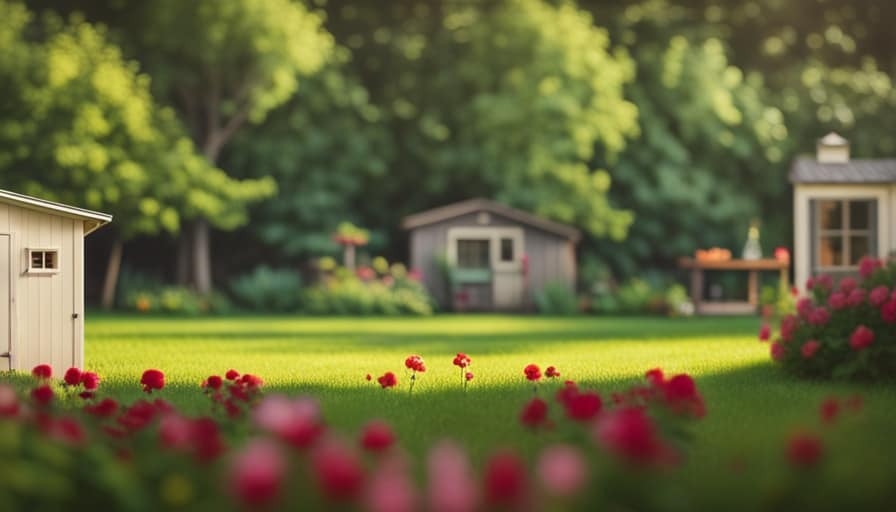
Finalizing and Fine-Tuning Storage Solutions
After evaluating our storage needs, we can now focus on perfecting and optimizing our storage solutions. Fine-tuning storage techniques is crucial to maximize the available space in our micro house. Here are some effective ways to organize small items effectively:
-
Utilize vertical space: Install shelves or hooks on walls to store items like books, kitchen utensils, and cleaning supplies.
-
Use storage containers: Invest in clear plastic containers with lids to store and stack smaller items like office supplies or craft materials.
-
Label everything: Labeling containers and shelves will make it easier to find and retrieve items quickly.
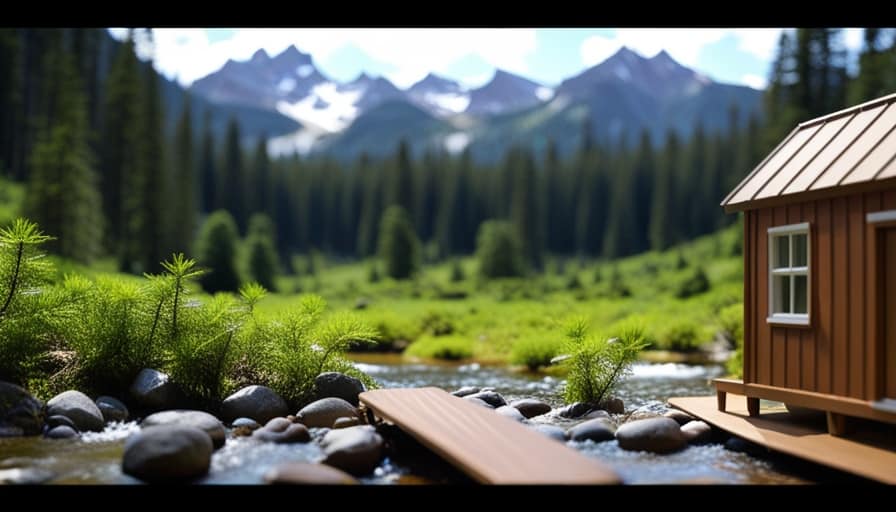
-
Create a designated spot for everything: Assign a specific place for each item, ensuring that everything is easily accessible and clutter-free.
Frequently Asked Questions
How Much Does It Cost to Install Built-In Storage Options?
Installing built-in storage options can vary in cost depending on factors such as the size of the project, materials used, and complexity of the installation process. Proper planning and budgeting are crucial when considering this home improvement.
Can Multi-Purpose Furniture With Storage Capacity Be Customized to Fit Specific Needs and Preferences?
Yes, multi-functional furniture with storage capacity can be customized to fit specific needs and preferences. These space-saving solutions provide versatile options for maximizing storage in micro houses while maintaining a personalized touch.
Are There Any Safety Considerations When Installing Sturdy Wall Shelves?
Safety precautions should always be taken into consideration when installing sturdy wall shelves. Proper installation techniques, such as using anchors and ensuring secure attachment to the wall, are essential for preventing accidents and ensuring stability.

What Are Some Creative Ways to Optimize Under Bed Storage Potential?
To maximize under bed storage potential, we get creative with our organization. We use space-saving solutions like under bed storage bins, rolling drawers, and vacuum-sealed bags. These clever ideas help us make the most of small spaces.
Are There Any Recommended Weight Limits for the Overhead Storage Units?
We recommend checking the installation guidelines for the overhead storage units to determine the recommended weight limits. It’s important to follow these guidelines to ensure the safety and durability of your storage solution.
Conclusion
In our quest to master micro house storage installation, we’ve explored various strategies and solutions.
From assessing our storage needs to incorporating built-in options, choosing multi-purpose furniture, and utilizing wall shelves, we’ve discovered the keys to efficient and effective storage.
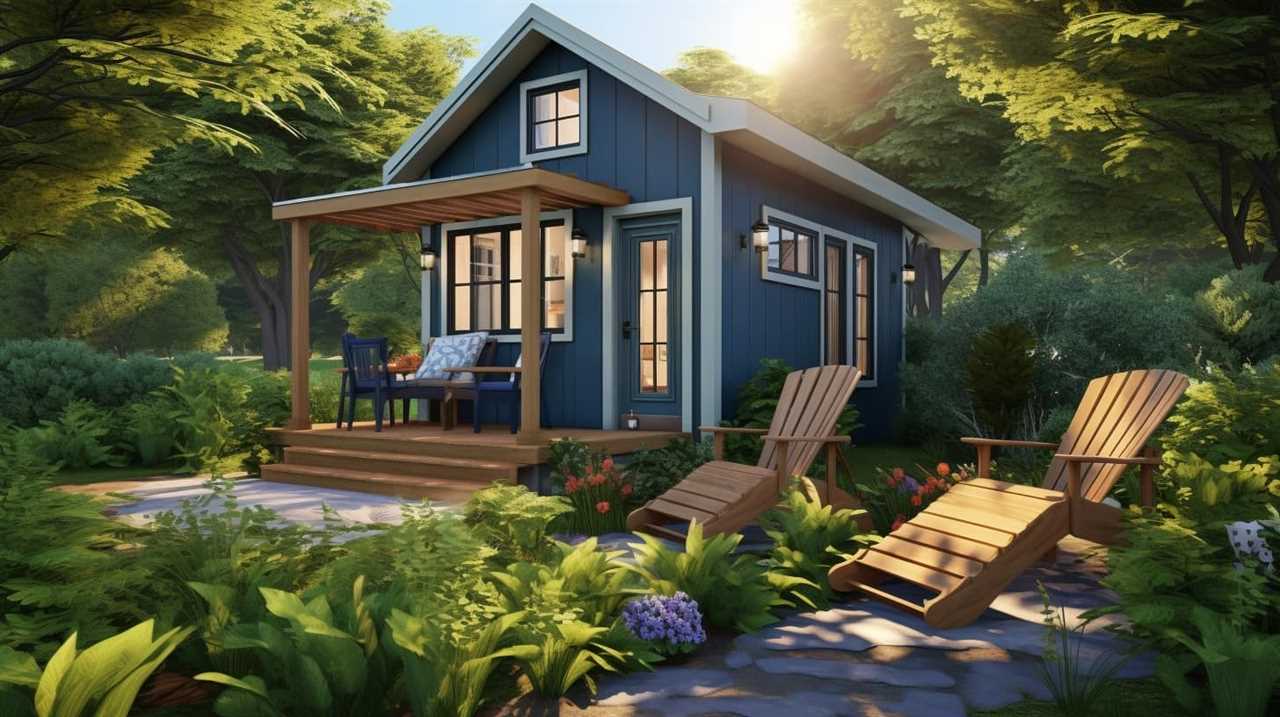
By making smart use of stair space, implementing hooks and hanging systems, and installing overhead units, we’ve maximized every nook and cranny.
Like a symphony of space-saving, our storage solutions harmonize to create a well-organized and visually appealing micro house.
I’m Theodore, and I love tiny houses. In fact, I’m the author of Tiny House 43, a book about tiny houses that are also tree houses. I think they’re magical places where imaginations can run wild and adventures are just waiting to happen.
While tree houses are often associated with childhood, they can be the perfect adult retreat. They offer a cozy space to relax and unwind, surrounded by nature. And since they’re typically built on stilts or raised platforms, they offer stunning views that traditional homes simply can’t match.
If you’re looking for a unique and romantic getaway, a tree house tiny house might just be the perfect option.
